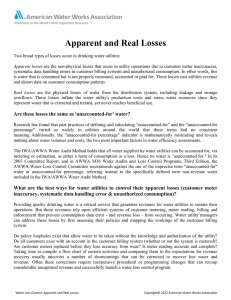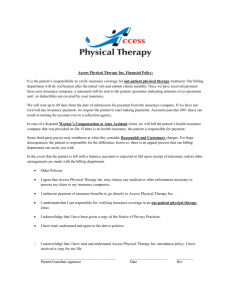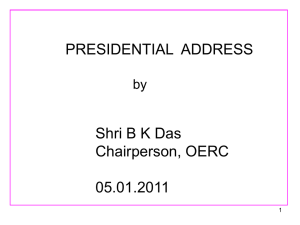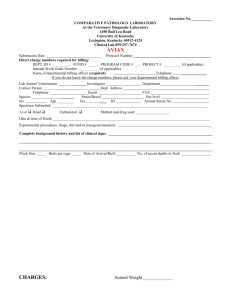Revenue assurance for electric utilities leveraging the
advertisement
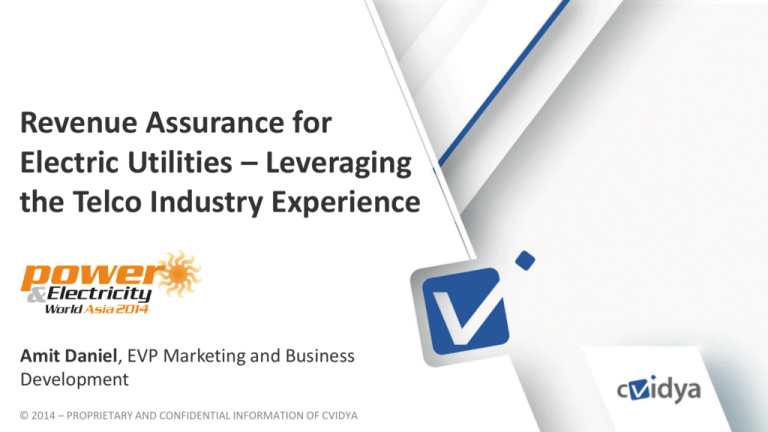
Revenue Assurance for Electric Utilities – Leveraging the Telco Industry Experience Amit Daniel, EVP Marketing and Business Development © 2014 – PROPRIETARY AND CONFIDENTIAL INFORMATION OF CVIDYA What You Should Know About Us A leading supplier of Revenue Analytics solutions to communications and digital service providers Founded: 2001 300 employees in 15 locations worldwide Deployed at 7 out of the 10 largest operators in the world 150 customers in 64 countries Processing 2.45 Billion subscribers in deployments globally Saving providers over $12 Billion in annual revenue Partnering with world-leading vendors 22 Turning your DATA into VALUE BUSINESS PROTECTION Revenue Assurance BIG DATA PLATFORM Fraud Management Transformation Assurance Data collection BUSINESS GROWTH Aggregation DATA SOURCES DWH Enrichment ERP Switch Mediation CRM 33 IP&DPI Probes Marketing Analytics Sales Performance Management Domain Expertise Order & Provisioning Billing BUSINESS ANALYTICAL LAYER Business Consulting Education Center Professional Services Market Trends 44 Paradigm shift in the utility market resulted in new risks Up to 25% revenue leakage depending on maturity level Data tsunami resulting from smart meter deployments Increasing investments in utility analytics Enhanced competition resulting from deregulation Pricing is becoming more complex $200B Annual Revenue Losses 55 Why Revenue Assurance is So Important for Utilities Revenue Assurance has a higher impact in areas with high complexity and large number of customers 6 Hıgh IT Wholesale and distribution Losses are up to 5% at utility companies (*) Telco Utilities High complexity of revenue assurance Growing interest, low formalization Finance Marginal interest, lack of awareness PA Low About 50% of Revenue/Cost leakages are caused by internal processes, which may require Revenue Assurance interventions Media and publishing Number of Customers Companies lose 2-6% of potential revenues due to issues originated from discrepancies between selling and payment collection Agri-food Pharmaceutical Manufacturing Low High Business Complexity (*) EII: Enterprise Information Integration, IURPA: International Utilities Revenue Protection Association Infrastructure complexity Complexity of services and pricing processes Rapid evolution of the market Regulations Typical Leakage at Utilities Technical Loss Operational Loss Transmission Losses Distribution Losses Metering Losses Technical line loss grid/transformation Technical line loss grid/transformation Meters manipulation Misconfiguration Stranded assets Inventory integrity Meters by-pass Contracts integrity Rating errors Late payments Outage Stranded assets Energy tapping Latencies Bad debt integrity Load balancing Outage energy theft Biased estimations Misplaced orders Unbilled customers Missing billable events Faulty reports Integrity energy reconciliation Profit margins Load balancing Energy reconciliation (retailers/transmission) Sales Losses Reading errors Credit integrity Lost readings Adjustments integrity False-positive inspections GenCo/TransCo Billing Losses Accounting Losses Misconfiguration Undercharges Missing payments General ledger errors Profit margins Overcharges Bill shock Profit margins 7 Financial Risk DistCo SalesCo Demand Response (DR) Peak utilization account for huge required investments; causes many of the grid failures Peak shaving is the holy grail for utility companies DR and Active DR, are key elements in utilization shaping and peak shaving Non-paying customers / or paying irregularly are – immune to DR – Consuming more energy than normal customers RA and FM reduce utilization by these customers; making them sensitive to DR 8 Npower: “Computer Error Had Caused Chaos” CEO, Paul Massara, issued a letter to all 5.4M Npower customers, which said: “We’ve let many of you down recently in the overall levels of customer service we’ve been providing. We apologize unreservedly. We promise that if you have been impacted by the billing system problems we’ve had, you will not lose out financially as a direct result” 99 Challenging Infrastructure & Electricity Theft 10 What is the Best Time to Implement Solutions? As early as possible in order to set the right foundations for tools, processes and organizational structure No need to wait for smart meters Before you start a transformation project, you can put the right controls in place and ensure a smooth transition When companies are merging their systems 11 “Revenue Chain” Leakage Product & Offer Management Order Management & Provisioning Usage & Metering Contract is incomplete and/or is different from customer request Customer information incomplete for billing processes Delays in order processing Active services on billing account not created or dismissed Early activation for 3rd parties services before client is enabled to use the service Usage metering corrupted or not produced Errors in usage information systems Leakage in the energy usage reconciliation between supplier, producer an distributor 0.8% 2.1% Selling of new products / services not yet enabled / implemented in billing systems Failure of expiration of promotion / discounts with deadline Offers / services dismissed Usability 0.2% 12 Revenue Leakage Cost Leakage Opportunity Loss % Estimated Leakages Ratios to Overall Revenues 12 “Revenue Chain” Leakage Rating & Billing Finance, Accounting and Collection Leakage due to: Pricing misapplication Discounting and bundle wrong calculation Wrong usage info routing in the metering to billing chain Late billing execution Invoices not produced or nor delivered to Print Vendor RC, NRC or TAX wrong calculation or not calculated Unsuccessful cash or wrong/partial management of built-in Wrong payment details Wrong definition / calculation of General Ledger code 1.25% 0.3% (and Event Processing / Dispatching) 13 Revenue Leakage Cost Leakage Customer Management Retention processes wrong or excessive Absence / by-pass of authorization processes for adjustment on billing systems 0.2% Opportunity Loss % Partner Management Overcharge: Costs to 3rd parties - wholesale partners, distribution companies and dealers Under payments from 3rd. Parties Interconnect completeness Low/Negative revenue Margins with 3rd parties Latency of work orders Missing receivables from dealers Excessive commission payments 0.75% Estimated Leakages Ratios to Overall Revenues 13 Reactive, Active and Proactive Proactive Implement controls and other measures to prevent problems Revenue Assurance Reactive Identify and resolve the cause of revenue loss that already took place Active Monitor problems in real time to investigate corrective response before any revenue loss will take place 14 14 THANK YOU! www.cvidya.com 15

